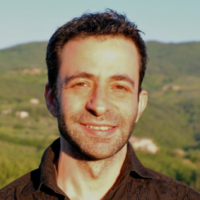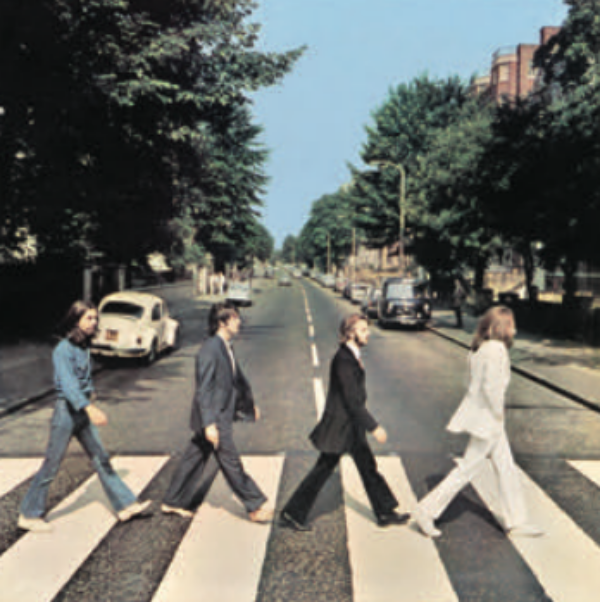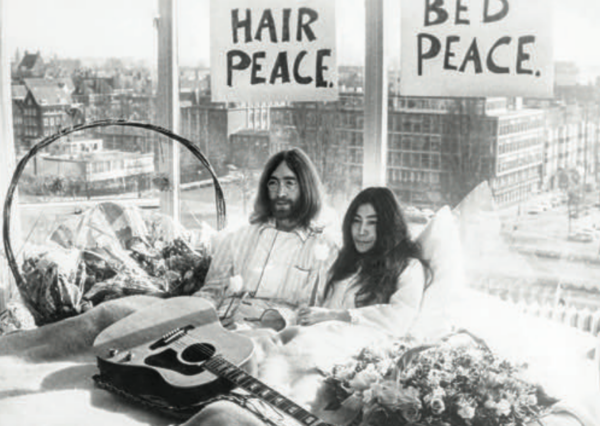1969, The Year that Rocked
Fifty years ago, rock music saw off the Sixties with an unmatched succession of classic albums and seminal moments. Johnathan Wingate delves into the dark madness of 1969, and its culmination with an epoch-making farewell from a recording studio by a zebra crossing in St John’s Wood...

By Jonathan Wingate
September 23 2019
Looking back through the prism of time, it can seem as though musical history was being made on a daily basis throughout 1969. If 1967 gave us the Summer of Love, and 1968 brought the end of the hippy dream, then it was the vertiginous highs and desperate lows of 1969 that produced the true drama – and an avalanche of classic records and musical landmarks. From Woodstock to Altamont, Abbey Road to Let It Bleed, Led Zeppelin to Miles Davis, it was a year in music like no other.
1969 marked not just the closing of the decade, but a changing of the guard. It began in January with the Beatles making their final public appearance together on the rooftop of their Apple headquarters in Savile Row. Exhausted and fed up, they were on the brink of splitting, just as Led Zeppelin were bursting into life with their ground-shaking debut album, simply called Led Zeppelin I. If the Beatles dominated the Sixties with their message of peace and love, Zeppelin would bestride the darker, heavier Seventies rock world. And they put out not just one, but two albums in 1969 (the second was, of course, Led Zeppelin II).
Led Zeppelin’s scintillating first two albums singlehandedly launched the heavy rock era, while The Stooges (with their eponymous album) and MC5 (with Kick out the Jams) introduced punk to the world. Fairport Convention started the British folk-rock movement, King Crimson laid the foundations for prog with In The Court Of The Crimson Kingand The Who released Tommy, the first rock opera. Want more? Miles Davis combined jazz with rock, funk and psychedelia on the trailblazing Bitches Brew; and artists as diverse as Dusty Springfield, Captain Beefheart, Scott Walker and The Band made their most important LPs.
Yet before the year was out, it was the Beatles who would deliver the crowning moment – their finest album of all, and perhaps the definitive recording of the 1960s: Abbey Road. More later, but how fitting that this autumn, 50 years on, it returned to a Number 1 spot.
1969’s musical achievements played out against tumultuous events on the world stage. At the beginning of the 1960s, the sense was of the dawning of a golden age in human history. By the end of the decade, it seemed as if the world was tearing itself apart at the seams.

“It was a year of extremes of violence and madness as well as achievement and success,” explains Barry Miles, co-founder of International Times, the underground newspaper. On the latter front, the world entered the supersonic age with the maiden flight, in March, of Concorde, the British-French passenger jet. In July, Neil Armstrong and Edwin ‘Buzz’ Aldrin became the first men to set foot on the Moon. And the perfect soundtrack had appeared just nine days before.
Inspired by astronaut Bill Anders’ iconic photograph of Earth from the Apollo 8 spacecraft, David Bowie wrote ‘Space Oddity’ on a 12-string guitar and a Stylophone given to him by his friend, Marc Bolan. It brought the still relatively unknown Bowie his first Top 10 hit.
The moon landings suggested a bold future, but the public mood was darker, especially in the States. The Manson Family murders in Los Angeles set the tone, while the tide of opinion rapidly turned against the country’s involvement in the Vietnam War. The mood was captured by the Rolling Stones, who kicked off Let It Bleed – their final album of the Sixties – with the incendiary ‘Gimme Shelter’, a song that symbolised the end of the decade’s utopian spirit: “That’s a kind of end-of-the-world song,” Mick Jagger explained to Rolling Stone. “It’s apocalypse. ‘Let It Bleed’ is a very moody piece about the world closing in on you. When it was recorded in early ’69, it was a time of war and tension. It was a very rough, very violent era.”

Newlyweds John Lennon and Yoko Ono had a different response to that violence: In May, they embarked on two week-long Bed-Ins For Peace (first at the Hilton Hotel in Amsterdam and then at the Queen Elizabeth Hotel in Montreal), which they saw as a new way of promoting their anti-war message. When a journalist asked why he felt he could succeed where so many others had failed, Lennon simply replied: “It’s like saying, ‘Why bother keeping Christianity alive just because Jesus was killed?’ We don’t think people have really tried advertising peace before. If anybody thinks our campaign is naïve, then that’s okay. Publicity is our game. Because of The Beatles, that’s the trade I’ve learned.”
At the end of June, the Jimi Hendrix Experience played their last show together at the Denver Pop Festival. Six weeks later, Hendrix formed a new group, Gypsy Sun and Rainbows, in time to take the final spot at the definitive live music event of the 1960s: the Woodstock festival. Billed as “an Aquarian Exposition: 3 Days of Peace & Music”, it took place at Max Yasgur’s 600-acre dairy farm in Bethel, New York, 43 miles from Woodstock itself. Bad organisation saw the site overrun by 400,000 people – twice the number expected. Roads were impassable and food and water ran out almost immediately, forcing the Army to airlift supplies to the site.
Hendrix grabbed music headlines despite not coming on stage until 8am on the last day of the festival. The show climaxed with his distorted, feedbackdrenched performance of ‘The StarSpangled Banner’, which he described as “a sonic portrayal of war”. The New York Post’s pop critic, Al Aronowitz, called it “the most electrifying moment of Woodstock, and probably the single greatest moment of the Sixties.”

For the Rolling Stones, things took the most tragic of turns when the band’s founder, Brian Jones, was found dead in his Sussex swimming pool. It was less than a month since the band had fired him, during the ‘Let It Bleed’ recording sessions, for his heavy drug use and erratic behaviour.
It was hardly uphill from there. The Stones closed out the year at the Altamont festival, held at the Altamont Speedway in Northern California and intended to be a West Coast Woodstock. It became infamous for the four deaths that took place during the festival, including an 18-year-old student stabbed during the Stones’ performance by one of the Hell’s Angels inexplicably hired to act as security. It was one of the darkest moments in the history of rock and roll, and marked the final death knell of Sixties flower power idealism.
As for Abbey Road, recorded during an intense two-month period in the summer of 1969, perhaps the most surprising thing is that it ever got made at all. As Lennon’s Bed-Ins demonstrated, the Beatles had become the most famous men in the world. In only seven years, they’d created a breathtaking body of work, but it had taken its toll, especially the aborted back-to-basics Get Back album of 1968. Both professionally and personally, they were heading in different directions.
The Get Back sessions were later salvaged, stitched together and released in 1970 as Let It Be. But Abbey Road stands as the Beatles’ final recording – a temporary truce that papered over the cracks between them. Yoko Ono’s constant presence in the studio is still cited by fans as one of the main reasons behind the band’s eventual breakup, though Lennon’s heroin addiction and his insistence that they bring in the notoriously hard-nosed Allen Klein as manager did just as much to finally
fracture the band’s facade. “After Let It Be, I didn’t think I’d ever work with the boys again,” their producer George Martin once told me. “But Paul rang me and said, ‘We want to do another album. Would you produce it for us?’ I told him that I didn’t enjoy working on Let It Be and that I’d only do it if I could produce it the way that I used to. None of this nonsense about doing a live album.
He said, ‘Yeah, that’s what we want you to do. We’ll really do it like the old days.’ I agreed to do it, and I think it worked out to be one of the best albums we made.”

Like all of the Beatles’ late-period LPs, Abbey Road is still infinitely greater than the sum of its individual parts. On the sublime ‘Here Comes The Sun’ and ‘Something’, George Harrison proved that he was now more than capable of coming up with songs that were equal to anything Lennon and McCartney wrote. McCartney and Martin did most of the work piecing together the leftovers and half-finished tracks that made up the astonishing climactic eight-song ‘Medley’. Although Lennon may have often subsequently dismissed the album for being too polished, Abbey Road contains three of the best songs he ever wrote in ‘Come Together’, ‘Because’ and ‘I Want You (She’s So Heavy)’.
Abbey Road is The Beatles’ most breathtakingly beautiful album. The songs are glass onions that have kept growing new layers of meaning and resonance, and still sound of-themoment. “If I had to choose one, it would be Abbey Road, because it was the last one we did,” Martin said. “It had a nice feel about it, because I think we all knew it was the last. So we thought, well, we might as well make it as good as we can.”
Abbey Road closes with ‘The End’, the perfect coda to the most important group in the history of popular music. On 20th September 1969, six days before Abbey Road came out, John Lennon told the others he was leaving the band. Let It Be may have been The Beatles’ final release, but Abbey Road was their last goodbye.
